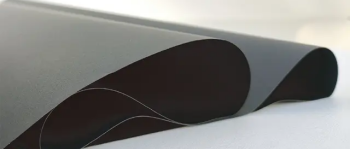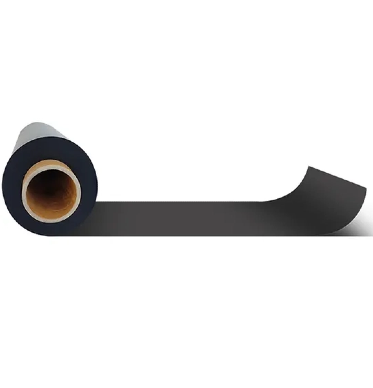In various aspects of life and industrial applications, bonding materials is a common task. Whether it's in furniture manufacturing, construction projects, or DIY crafts, Urethane Foam Glue has emerged as a reliable solution for joining different materials with polyurethane foam. Hubei Xiangyuan New Material Technology Inc., a leading name in the polyurethane material industry, offers high - quality Urethane Foam Glue products. For more information, visit our website at www.xyfoams.com. In this article, we will share professional tips on how to use Urethane Foam Glue effectively.

Pre - construction Preparations
Tool Preparation
Before starting any project with Urethane Foam Glue, it is essential to prepare the necessary tools. A caulking gun is a must - have for dispensing the glue accurately, especially for tube - packaged glues. It allows for better control over the amount of glue released, ensuring a neat and precise application. Scrapers come in handy for spreading and smoothing the glue, especially when working on larger surfaces. Cleaners, such as isopropyl alcohol or specialized adhesive removers, are required to clean the surfaces before gluing and to remove any excess glue after the job is done. Additionally, protective gear like gloves and masks should be prepared. Gloves protect your hands from coming into direct contact with the glue, which may cause skin irritation, and masks safeguard you from inhaling any potentially harmful fumes during the application process.
Material Surface Treatment
Proper surface treatment is crucial for achieving a strong bond. First and foremost, the surfaces to be bonded need to be thoroughly cleaned. Dust, oil, dirt, and other contaminants can significantly reduce the adhesive's effectiveness. For example, on metal surfaces, you can use a degreaser to remove oil stains, followed by wiping with a clean, dry cloth. For wooden surfaces, sandpaper can be used to gently roughen the surface, increasing the surface area and allowing the glue to adhere better. This roughening process creates tiny crevices where the glue can penetrate and form a more secure bond. It is important to note that after sanding, the surface should be cleaned again to remove any dust particles generated during the process.
Environmental Conditions Consideration
Environmental factors, especially temperature and humidity, play a vital role in the curing process of Urethane Foam Glue. The ideal temperature range for applying the glue is typically between 15 - 25℃. When the temperature is too low, the chemical reaction within the glue that leads to curing slows down significantly. This not only prolongs the curing time but may also result in a weaker bond as the glue may not fully polymerize. On the other hand, high humidity levels can cause problems such as the glue turning white or developing a cloudy appearance, which affects both the aesthetic and the strength of the bond. Therefore, it is advisable to check the weather forecast and ensure that the working environment meets the recommended conditions before starting the gluing work.
Glue Dispensing and Storage
Correct Packaging Opening
Opening the glue packaging correctly is the first step to ensure its proper use. Different types of packaging require different opening methods. For canned glues, make sure to remove the protective cap carefully, and if there is a seal, puncture it gently without damaging the can. For tube - packaged glues, cut the tip of the tube at an appropriate angle, usually around 45 degrees, to create an opening of the right size. Avoid opening the tube too wide, as this may lead to excessive glue flow and wastage.
Glue Dispensing Methods
The method of dispensing the glue depends on its packaging form. For canned glues used with a caulking gun, load the can into the gun according to the manufacturer's instructions. Squeeze the trigger gently and steadily to release the glue in a controlled manner. For bottled glues, you can use a dropper to transfer the glue to the surface or pour it carefully, ensuring not to pour out more than needed. When pouring, it is recommended to tilt the bottle slowly to have better control over the amount of glue dispensed.
Storage of Remaining Glue
Proper storage of the remaining glue is essential to maintain its quality. After use, immediately seal the packaging tightly to prevent air from entering. Air exposure can cause the glue to dry out or undergo chemical changes that reduce its adhesiveness. Store the glue in a cool, dry place away from direct sunlight. High temperatures and sunlight can accelerate the degradation of the glue. If possible, keep the glue in its original packaging, as it is designed to protect the product from external factors.
Application and Construction Techniques
Selection of Application Methods
There are several methods for applying Urethane Foam Glue, each with its own advantages and suitable scenarios. Brush application is ideal for small - scale projects or surfaces with complex shapes. It offers flexibility and allows for precise control over the glue's placement. However, it may result in an uneven coating. Spray application, on the other hand, is highly efficient for large - scale projects. It provides a smooth and even layer of glue but requires more equipment and may lead to some glue wastage due to overspray. Knife scraping and roller coating are also common methods. Knife scraping is suitable for applying a relatively thick layer of glue, while roller coating can be used for covering large, flat surfaces quickly.
Control of Application Thickness
Controlling the thickness of the glue application is key to achieving a strong and long - lasting bond. The appropriate thickness depends on the materials being bonded and the specific application requirements. In general, a thin, even layer is sufficient for most applications. You can use tools like scrapers or applicators with specific thickness settings to ensure uniformity. Applying too thick a layer not only wastes glue but also increases the curing time and may lead to issues such as poor adhesion or uneven expansion. Conversely, a layer that is too thin may not provide enough bonding strength.
Techniques for Filling Gaps
When filling gaps with Urethane Foam Glue, certain techniques can enhance the effectiveness. It is advisable to fill the gap in layers. Start from the bottom of the gap and work your way up. This approach helps to prevent air bubbles from being trapped inside the gap. As you fill each layer, use a tool, such as a small stick or the tip of the glue applicator, to gently press the glue, expelling any air pockets. For example, when filling gaps around windows and doors in construction projects, this layering and pressing method can ensure a tight and reliable seal.
Precautions During Bonding and Curing
Material Alignment and Fixing
After applying the glue, quickly and accurately align the materials to be bonded. Proper alignment is crucial to ensure a strong and aesthetically pleasing bond. For larger or heavier materials, it is recommended to use clamps, tapes, or other fixtures to hold the materials in place during the curing process. These fixtures provide the necessary pressure to ensure that the surfaces are in full contact with the glue, promoting better adhesion. Without proper fixing, the materials may shift, resulting in a weak bond or misaligned joints.
Curing Time Management
Several factors can affect the curing time of Urethane Foam Glue, including temperature, humidity, glue type, and application thickness. Generally, it takes 24 - 48 hours for the glue to fully cure at room temperature. However, in colder or more humid environments, the curing time may be extended significantly. It is important to avoid moving or disturbing the bonded materials during the curing process. Premature movement can break the bond or cause cracks in the glue, compromising its strength. Always refer to the manufacturer's instructions for the specific curing time and conditions of the glue you are using.
Methods for Accelerating Curing
In situations where time is of the essence, there are some safe methods to accelerate the curing process. One way is to increase the environmental temperature slightly, but make sure not to exceed the maximum temperature limit recommended by the glue manufacturer. This can be achieved by using a heat lamp or placing the bonded materials in a warm room. Another method is to improve ventilation. Good air circulation helps to remove the moisture generated during the curing process, speeding up the chemical reaction. However, be cautious not to expose the glue to strong drafts, as this may cause uneven drying.
Finishing and Cleaning Work
Removal of Excess Glue
Once the glue has cured, you may need to remove any excess glue. For cured Urethane Foam Glue, a sharp knife can be used to carefully cut away the excess. When cutting, hold the knife at a shallow angle to avoid scratching the surface of the materials. Sandpaper can also be used to smooth out any rough edges. In some cases, specialized adhesive removers can be applied to dissolve the excess glue, especially for stubborn residues. But be sure to test the remover on a small, inconspicuous area first to ensure it does not damage the materials.
Tool Cleaning and Maintenance
After completing the gluing project, it is important to clean the tools immediately. For caulking guns, remove any remaining glue from the barrel and plunger. You can use a solvent recommended by the manufacturer to dissolve the glue. Scrapers and other tools should be wiped clean with a cloth soaked in the appropriate cleaner. Once cleaned, dry the tools thoroughly and store them in a safe place. Regular cleaning and maintenance of the tools can extend their lifespan and ensure they are in good condition for future use.
Work Area Cleanup
Finally, clean up the work area. Use a broom or vacuum cleaner to remove any debris, dust, or small pieces of glue. Wipe down the surfaces with a clean cloth to ensure that the work area is tidy and free of any adhesive residues. A clean work environment not only makes the workspace more pleasant but also reduces the risk of accidentally spreading glue to other areas.

Conclusion
In conclusion, using Urethane Foam Glue effectively requires careful preparation, proper application techniques, and attention to detail during the bonding and curing processes. By following these expert tips, you can achieve strong, reliable bonds in your projects. If you have any questions or need high - quality Urethane Foam Glue products, please visit Hubei Xiangyuan New Material Technology Inc. at www.xyfoams.com. Our team is ready to provide you with professional support and assistance.

















